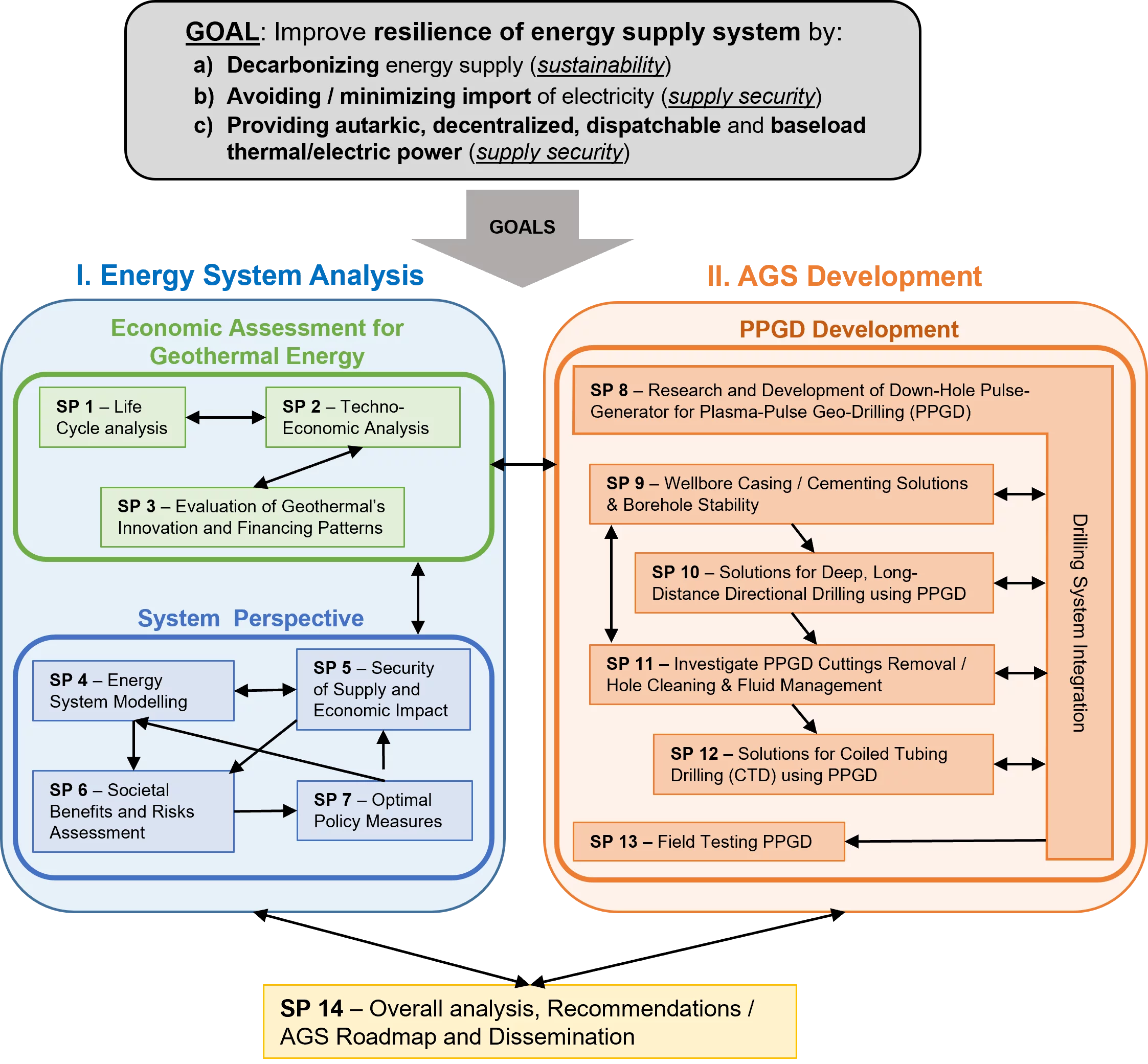Advanced Geothermal Systems to Improve the Resilience of the Energy Supply of Switzerland (AEGIS-CH) is an Innosuisse Flagship project with the aim to improve the resilience of the Swiss energy system through the development and integration of Advanced Geothermal Systems (AGS). AGS, consisting of closed-loop wells without any hydraulic stimulation, have the potential to provide decarbonized, domestic and decentralized heat and electric power. This enables firming up an increasingly solar/wind (and thus largely only intermittently available) Swiss energy supply system, supporting the Swiss Energy Transition Strategy (SETS) 2050 as well as UN Sustainable Development Goals. Together with our academic and industry partners, new technology is developed to construct closed-loop AGS and the potential of AGS is explored in the context of the optimal energy mix. This integrated concept leads to essential AGS developments, energy policy recommendations for Switzerland and new energy business models.
The main goals of the project are threefold:
- Decarbonizing Energy Supply
- Avoiding / Minimizing Import of Electricity
- Providing Autarkic, Decentralized, Dispatachable, Baseload Thermal & Electric Power.
AEGIS-CH uses a holistic and systemic approach by grouping the 14 sub-projects in three clusters as well as a dedicated sub-project for dissemination activities. The “Economic Assessment” cluster (SP 1-3) enables proper inclusion of all modern geothermal energy technologies in such energy systems. It also links to the sub-projects on AGS technology development (see SP 8-13 below). To address this holistically, we consider the environmental, techno-economic and ecological aspects of the Swiss energy supply system (SESS).
The “System Perspective” cluster (SP 4-7) then addresses the overall energy mix scenarios for Switzerland, where all primary energy sources with proper integration of geothermal energy technologies and in particular AGS are included to reach the goals of the Swiss Energy Strategy 2050 and the targets of Switzerland’s long-term climate strategy. This cluster will deliver the benefits and overall risk of the energy mix scenarios and derive potential policy measures to motivate and steer the market.
In the “AGS Development” cluster (SP 8-13), a key aspect is the development of a significantly cheaper drilling technology based on novel Plasma-Pulse Geo-Drilling (PPGD) technology. A major component of this development is the down-hole pulse-generator (DHPG) in SP 8 which aims to integrate the pulsed plasma system in the bottom hole assembly. In addition, the entire PPGD drill system and drilling process need to be investigated, developed, and tested including specific casing/cementing solutions, borehole stability assessments (SP 9), directional drilling solutions (SP10), cuttings removal/fluid management (SP 11), coiled tubing drilling options (SP 12) and finally field testing (SP 13). Hence, the complete drilling process with novel PPDG technology and the complete drilling system is focused in the “AGS Development” cluster.
The overarching goal is to provide recommendations and roadmaps for the Swiss energy supply system (in SP 14), according to specified (Swiss Energy Transition 2050 and supply security) goals, such as no operational CO2 emissions, ensure supply security and limited/no energy imports.
Figure 1: Graphical overview of the AEGIS structure

